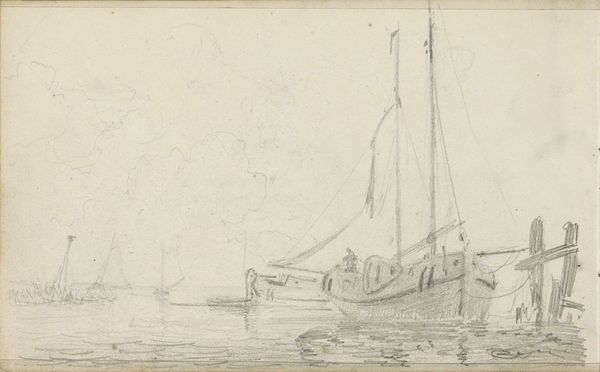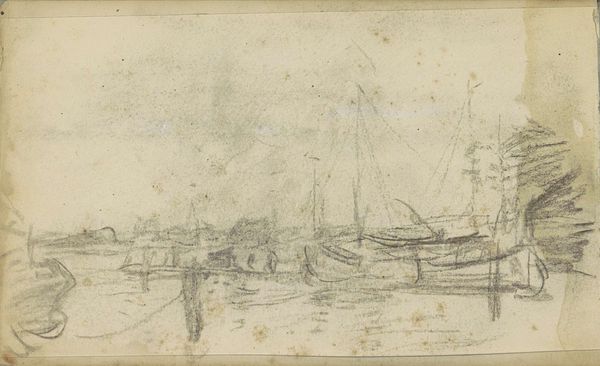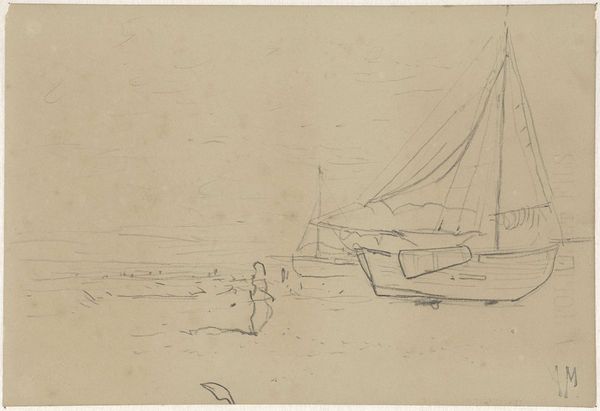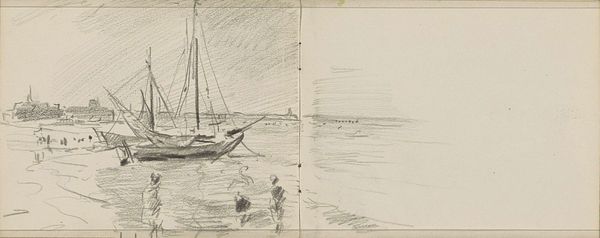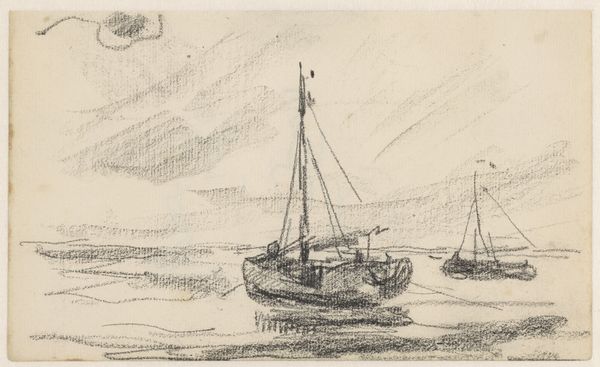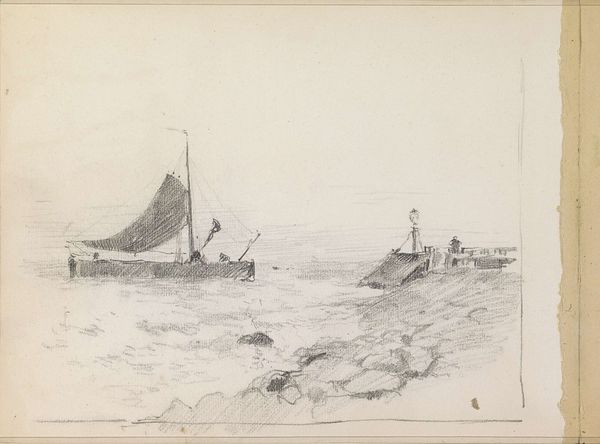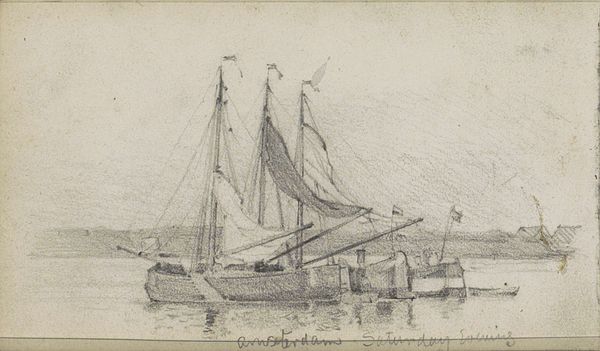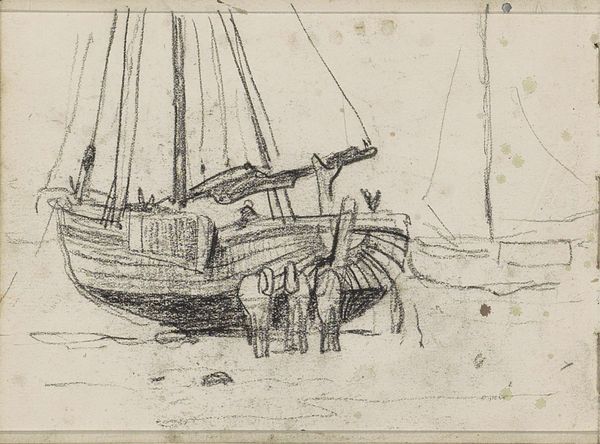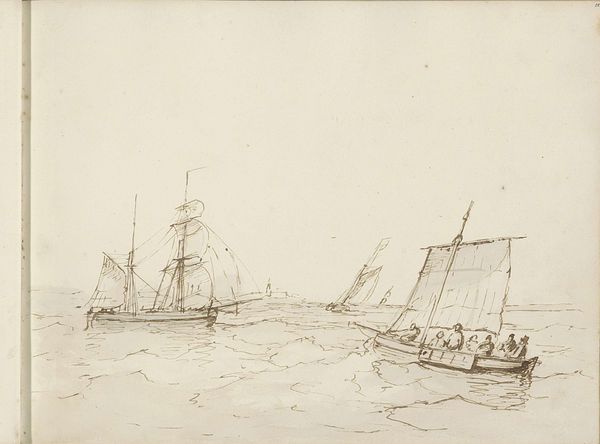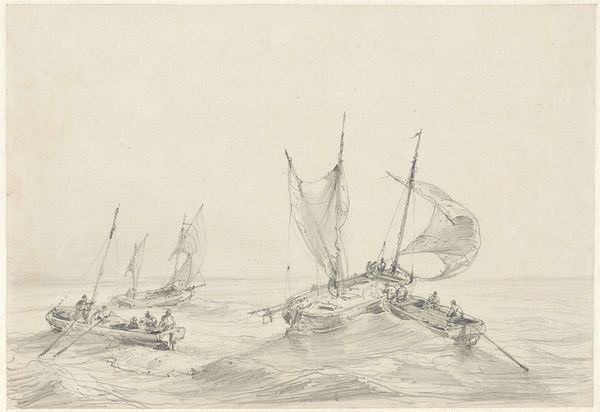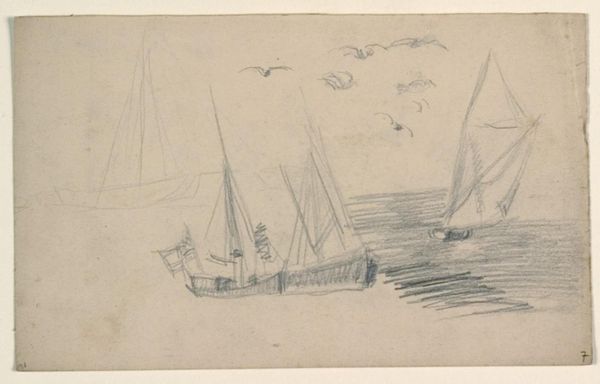
Copyright: Rijks Museum: Open Domain
Johan Antonie de Jonge made this pencil drawing of sailboats off the coast of Holland sometime between 1880 and 1920. What's striking about this sketch is its casualness. De Jonge isn't trying to show us the grandeur of the sea, but the daily life of the people who depend on it. During the late 19th and early 20th centuries, Dutch art academies emphasized realism, urging artists to depict the world around them accurately and without embellishment. This artistic approach reflected a broader cultural shift towards valuing the lives of ordinary people. The sketch also reflects the growing interest in the fishing industry as a subject for art. As the Dutch economy expanded, artists and intellectuals began to see fishermen as symbols of national identity. They were hard-working, resilient, and deeply connected to the land and sea. To fully understand this image, we need to investigate the social and economic conditions of the Dutch fishing industry at the turn of the century. By consulting historical archives and other period documents, we can gain a deeper appreciation of the image.
Comments
No comments
Be the first to comment and join the conversation on the ultimate creative platform.
